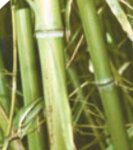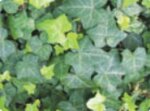The spread of invasive species is one of the most pressing threats to park environments. Here are some of the offenders.
This item is available in full to subscribers.
We have recently launched a new and improved website. To continue reading, you will need to either log into your subscriber account, or purchase a new subscription.
If you are a digital subscriber with an active subscription, then you already have an account here. Just reset your password if you've not yet logged in to your account on this new site.
If you are a current print subscriber, you can set up a free website account by clicking here.
Otherwise, click here to view your options for subscribing.
Please log in to continue |








Japanese knotweed
Japanese knotweed (Fallopia japonica), originally from East Asia, was introduced to the United States in the late 19th century as an ornamental plant. It thrives in a variety of soil types, spreads rapidly, and is remarkably resilient, making it a formidable opponent to native flora.
What makes Japanese Knotweed particularly pernicious is its aggressive growth pattern and ability to dominate landscapes. This plant is so tough it is one of the first to appear atop volcanoes. It can grow up to 10 cm a day during the peak growing season, with roots that can extend up to 3 meters deep and 7 meters horizontally, outcompeting native plants for resources. Its dense growth can block sunlight from reaching other plants, effectively starving them and reducing biodiversity. Moreover, its roots can damage infrastructure, such as sidewalks and foundations, posing urban challenges.
The plant can regenerate from tiny fragments of root or stem, making eradication efforts difficult and often requiring long-term management strategies.
Bamboo
Bamboo (Phyllostachys), a fast-growing grass native to diverse climates across Asia, Africa, and the Americas, was introduced primarily for ornamental purposes, erosion control, and as a natural privacy screen.
This species is highly aggressive and has a remarkable capacity to spread beyond intended areas. Its vigorous growth rate and the ability of its rhizomes (underground stems) to spread extensively and rapidly allow it to outcompete native vegetation for space, sunlight, and nutrients, leading to a decrease in local biodiversity.
Bamboo's resilience is notable, with its capacity to recover from cutting and its resistance to many common herbicides, making eradication efforts particularly difficult. Physical removal requires digging out the extensive root system, a labor-intensive and often incomplete solution. Furthermore, bamboo's dense thickets create monoculture stands that can hinder the growth of native species and alter habitat structures for local wildlife.
In urban environments, the aggressive root systems of bamboo can infiltrate and damage foundations, pipes, and sidewalks, posing significant challenges for property owners and city managers.
Japanese angelica
Japanese Angelica Tree (Aralia elata), native to Japan, Korea, and parts of China, is another invasive species that poses significant ecological challenges in the Wissahickon. Introduced to the United States in the 1830s as an ornamental plant due to its attractive foliage and flowers, its spread has become a concern for local ecosystems.
The invasiveness of the Japanese Angelica Tree stems from its rapid growth and prolific seed production, which allow it to quickly dominate landscapes, overshadowing native species. This fast-growing tree quickly populates open, urban, and disturbed habitats, spreading via root suckers and both sexual and asexual reproduction. It can reach substantial heights, and it’s dense canopy blocks sunlight, inhibiting the growth of native understory plants critical for local biodiversity. Furthermore, its widespread root system can lead to soil erosion and disrupt local waterways, further impacting native habitats.
What makes the Japanese Angelica Tree particularly troublesome is its ability to thrive in a variety of soil types and conditions. The tree's seeds are easily dispersed by wind and animals, facilitating its spread across landscapes and making its management challenging. It has become a large problem in the Philadelphia region and also the Lower Hudson.
English ivy
English Ivy (Hedera helix), a vine native to Europe and western Asia, was introduced to North America by colonial settlers in the 18th century for its appealing aesthetic qualities.
Its invasive status stems from its aggressive growth habit and its ability to thrive in a wide range of environmental conditions. Its dense foliage and vigorous growth habit allow it to climb and cover trees, walls, and ground, outcompeting native plant species for light and space. When it climbs trees, the added weight and reduced light penetration can lead to tree decline and increased susceptibility to disease and storm damage. On the ground, its dense carpet inhibits the germination and growth of native plants, leading to reduced biodiversity.
One of the most challenging aspects of controlling English Ivy is its strong root system, which makes physical removal difficult and time-consuming. Moreover, its ability to regrow from small cuttings or fragments left in the soil complicates eradication efforts.
Japanese honeysuckle
Japanese Honeysuckle (Lonicera japonica), a vine native to East Asia, was introduced to the United States in the early 19th century for ornamental purposes, erosion control, and as ground cover. It has since become invasive in many parts of the country, including the Wissahickon Park.
The vine is particularly problematic due to its vigorous growth, sweet-smelling flowers, and the ability to thrive in a wide range of environments. Its rapid growth allows it to quickly cover, outcompete, and choke out native plant species. The vine can smother young trees and shrubs, hinder their growth, and eventually kill them by blocking sunlight. Its dense ground cover prevents the germination and growth of native plants, altering the composition and function of native habitats.
Japanese Honeysuckle's ability to spread is facilitated by its high seed production, long blooming period, and the attractiveness of its flowers to wildlife, which helps disperse its seeds. Moreover, its stems can root at the nodes, enabling the vine to spread across the ground rapidly and form dense mats.
Burning bush
Winged Euonymus, also known as Burning Bush (Euonymus alatus), is a shrub native to East Asia. It was introduced to North America in the mid-19th century for its striking fall foliage, which turns a vibrant red. Its widespread use in landscaping has led to its classification as an invasive species in various parts of the United States, including natural and urban environments like Wissahickon Park.
The shrub's invasiveness is attributed to its adaptability, high seed production, and attractiveness to birds, which facilitate its spread into natural areas.
Its dense growth habit allows it to form thickets that outcompete native vegetation and its ability to thrive in a variety of soil and light conditions makes it a formidable competitor to indigenous plant species. Furthermore, its dense thickets can alter the structure and function of natural habitats, impacting the animals that depend on native plants for food and shelter.
Multiflora rose
Multiflora Rose (Rosa multiflora) is an invasive shrub native to East Asia, introduced to the United States in the late 19th century for use as rootstock for cultivated roses and later promoted for erosion control, wildlife habitat, and living fences.
However, its attributes quickly became liabilities as it spread uncontrollably in various environments, including urban and natural areas like Wissahickon Park. The plant's rapid growth, prolific seed production, and ability to thrive in disturbed soils have made it a problematic invasive species.
Multiflora Rose's invasiveness is particularly evident in areas where the soil has been disturbed, as it quickly colonizes these areas, forming dense, impenetrable thickets. These thickets are difficult to penetrate due to the plant's numerous, large thorns and they also outcompete native vegetation for resources, light, and space.
Tree of heaven
The Tree of Heaven (Ailanthus altissima), native to China and North Korea, was introduced to the United States in the late 18th century as an ornamental plant. Its rapid growth, ability to thrive in a wide range of environmental conditions, and aggressive reproductive strategies have led to its classification as an invasive species. This tree is particularly notorious for its ability to quickly colonize disturbed sites, outcompeting native vegetation and altering local ecosystems.
One of the Tree of Heaven's most problematic traits is its prolific seed production and the release of chemicals into the soil that inhibit the growth of other plants, a phenomenon known as allelopathy. These characteristics enable it to dominate landscapes, reducing biodiversity by suppressing the growth of native plant species. Additionally, its roots can cause damage to sidewalks, foundations, and sewer lines, presenting urban management challenges.